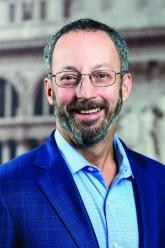Opinion

Roe v. Wade overturned: A family medicine resident reacts
- Author:
- Victoria Persampiere, DO
Publish date: July 12, 2022
The most socially and economically vulnerable will be most harmed by restricting access to abortions, a resident says.
Opinion

My experience as a family medicine resident in 2021
- Author:
- Victoria Persampiere, DO
Publish date: October 25, 2021
My attending knew her patients; they were not faceless unknowns in a hospital gown to her.
Opinion

Smart watch glucose monitoring on the horizon
- Author:
- Neil Skolnik, MD
- Victoria Persampiere, DO
Publish date: September 23, 2021
For now, the newest technology available for monitoring glucose is CGM.
Opinion

The Cures Act: Is the “cure” worse than the disease?
- Author:
- Victoria Persampiere, DO
- Neil Skolnik, MD
Publish date: June 15, 2021
‘This act stands in the way of delivering quality, humanizing medical care.’
